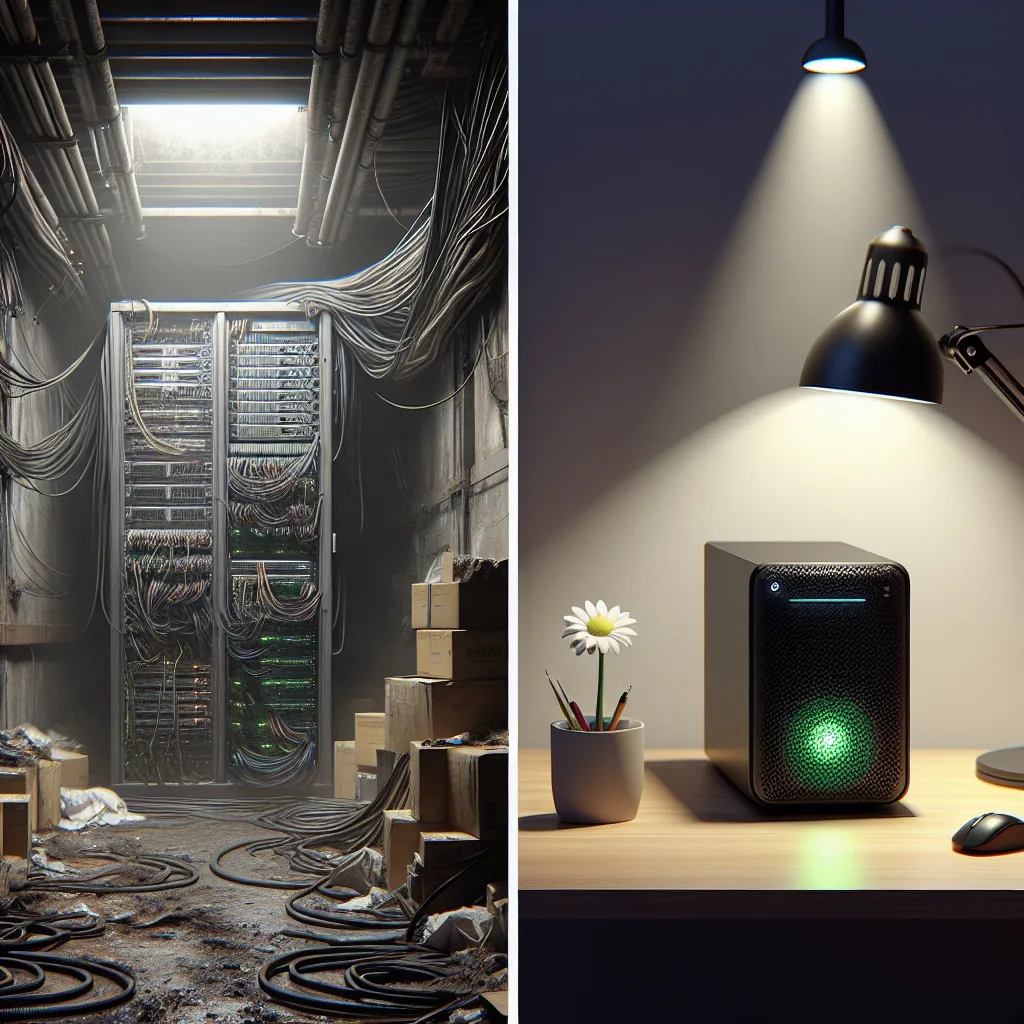Thinking about a homelab? We compare cheap, used enterprise servers with modern mini PCs to help you decide which is truly the better value.
I was scrolling through some tech forums the other day and saw a question that really made me think: “I can get a powerful old server for about $100. Why would I ever buy a mini PC?”
It’s a great question. On the surface, it seems like a no-brainer. Why pay more for less?
A decommissioned enterprise server, like a Dell PowerEdge R630, offers a ton of raw power. We’re talking dual CPUs, tons of RAM slots, and enterprise-grade reliability. For a hundred bucks, you can get a machine that was worth thousands just a few years ago. If you’re looking to build a serious homelab for running something like Proxmox with a whole cluster of virtual machines, the appeal is obvious. More cores, more memory, more power.
But I’ve come to realize the choice isn’t just about the spec sheet. The real story is in the hidden costs.
The True Cost of “Cheap” Power
That $100 server is just the beginning. The first thing you’ll notice isn’t the performance, but the noise. These machines were designed for server rooms, where noise doesn’t matter. In your home office or closet? It’s like having a jet engine idling in the next room. Some people don’t mind it, but for many, it’s a deal-breaker.
Then there’s the power bill. An old server like that can easily pull 100-200 watts at idle. Let’s be generous and say it averages 150W. Running 24/7, that’s over 1,300 kWh a year. Depending on where you live, that could add hundreds of dollars to your annual electricity costs. Suddenly, your “cheap” server isn’t so cheap anymore.
And let’s not forget the size. A rack server is, well, big. It’s heavy, needs a dedicated space, and isn’t exactly something you can tuck behind your monitor.
The Quiet Competence of the Mini PC
This is where the mini PC comes in. For a few hundred dollars, you can get a brand new mini PC that’s smaller than a book. It’s quiet—often completely silent—and sips power, typically using just 10-15 watts at idle.
Sure, it might not have 24 CPU cores or 128GB of RAM. But do you really need it?
Here’s the thing I’ve learned about my own projects: most of the time, my server is just sitting there, waiting for me to do something. For running a handful of services like Pi-hole, a media server, or Home Assistant, a modern mini PC is more than capable. The processors in these little machines are surprisingly powerful and efficient.
It really boils down to what you actually need versus what sounds cool.
- Need a powerful virtual machine cluster? That old server might be the right call, as long as you can handle the noise and power draw.
- Need to run a few key services reliably and efficiently? A mini PC is probably the smarter, simpler choice.
I started my homelab journey thinking I needed the most powerful gear I could find. I ended up realizing I valued silence and a lower power bill a lot more. The mini PC won me over not with raw specs, but with its practicality. It just sits there, does its job, and stays out of the way.
So, while the allure of a $100 server is strong, it’s worth looking past the price tag. Think about the hidden costs of noise, power, and space. Sometimes, the small, quiet, and efficient choice is the better one in the long run.
